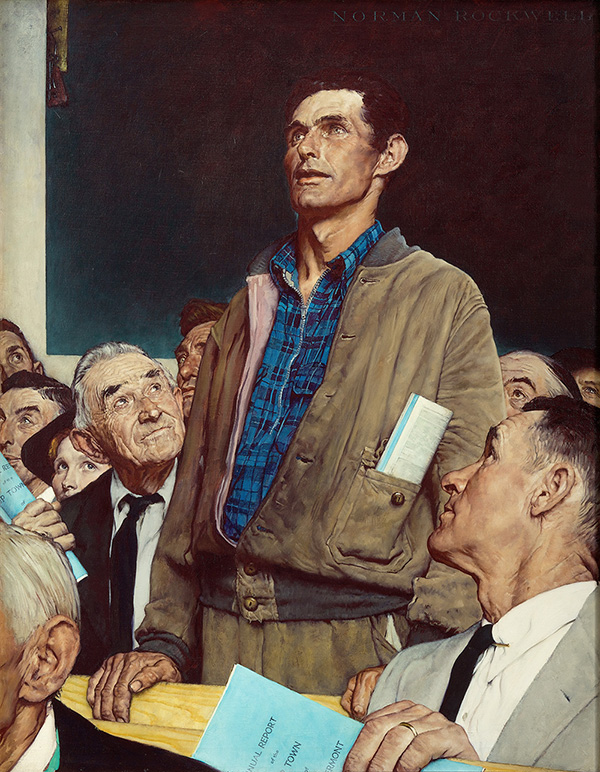
WASHINGTON, DC – “The Four Freedoms” is among American painter Norman Rockwell’s most popular works. First published in the widely circulated Saturday Evening Post in 1943, and then distributed even more broadly by the US government in a national tour and a set of posters promoting the sale of war bonds, the four images have lingered in individual homes and in the collective memory ever since. So near-universal is their appeal that it is surprising to learn that they are, to a great extent, about the merit of unpopular ideas.
The series was created in support of a challenging idea that was struggling to find traction in Franklin Delano Roosevelt’s America, and it was inspired by a moment the artist witnessed, in which a local man took the floor at a town meeting to speak against the crowd. In the painting inspired by that moment, “Freedom of Speech,” we see the man capture the attention of the others in the room, who while they might not agree with or even fully understand the man’s point of view, respectfully listen nevertheless. “The Four Freedoms” series did much the same thing during wartime America, giving a troubled country an opportunity to listen to a common narrative and coalesce around a shared sense of identity and purpose. The complexities of that identity and purpose are explored in “Enduring Ideals: Rockwell, Roosevelt & the Four Freedoms,” organized by the Norman Rockwell Museum and traveling to at least six venues through the fall of 2020. It is on view at the George Washington University Museum and the Textile Museum in Washington, DC, February 9 through May 6.


